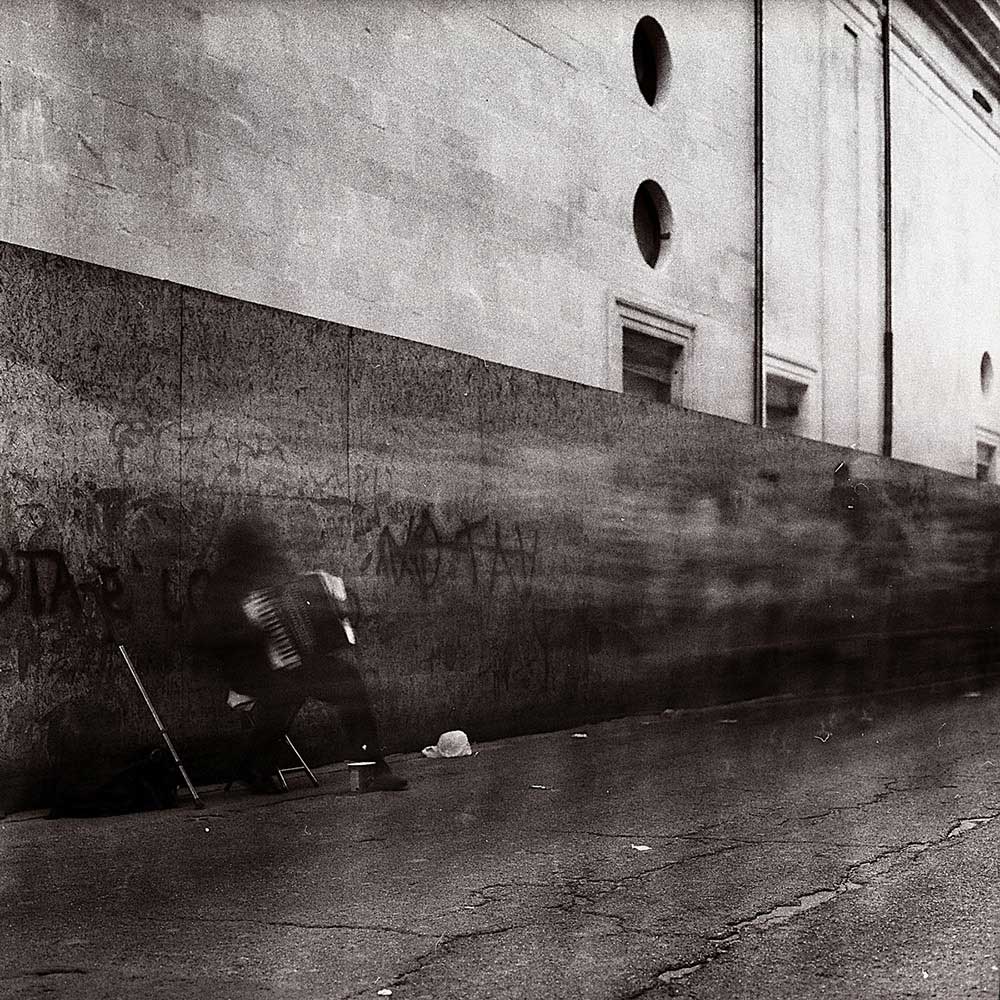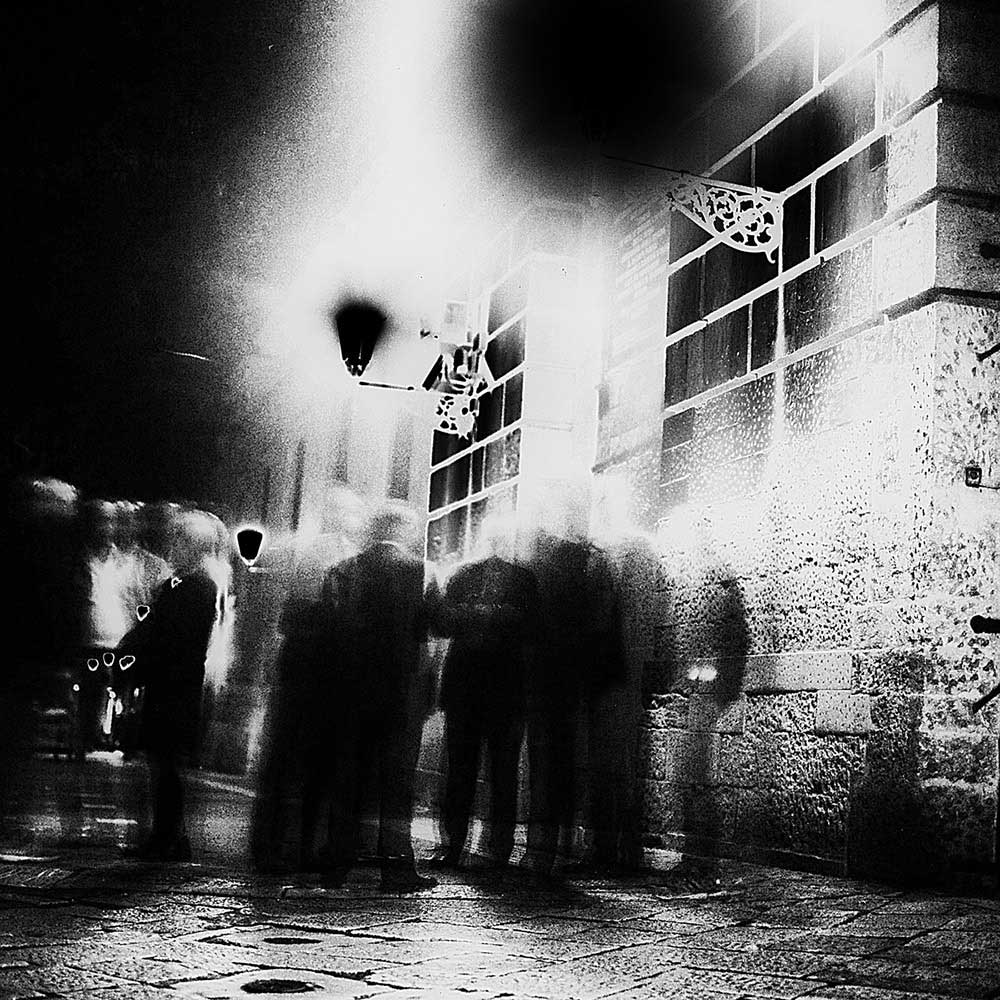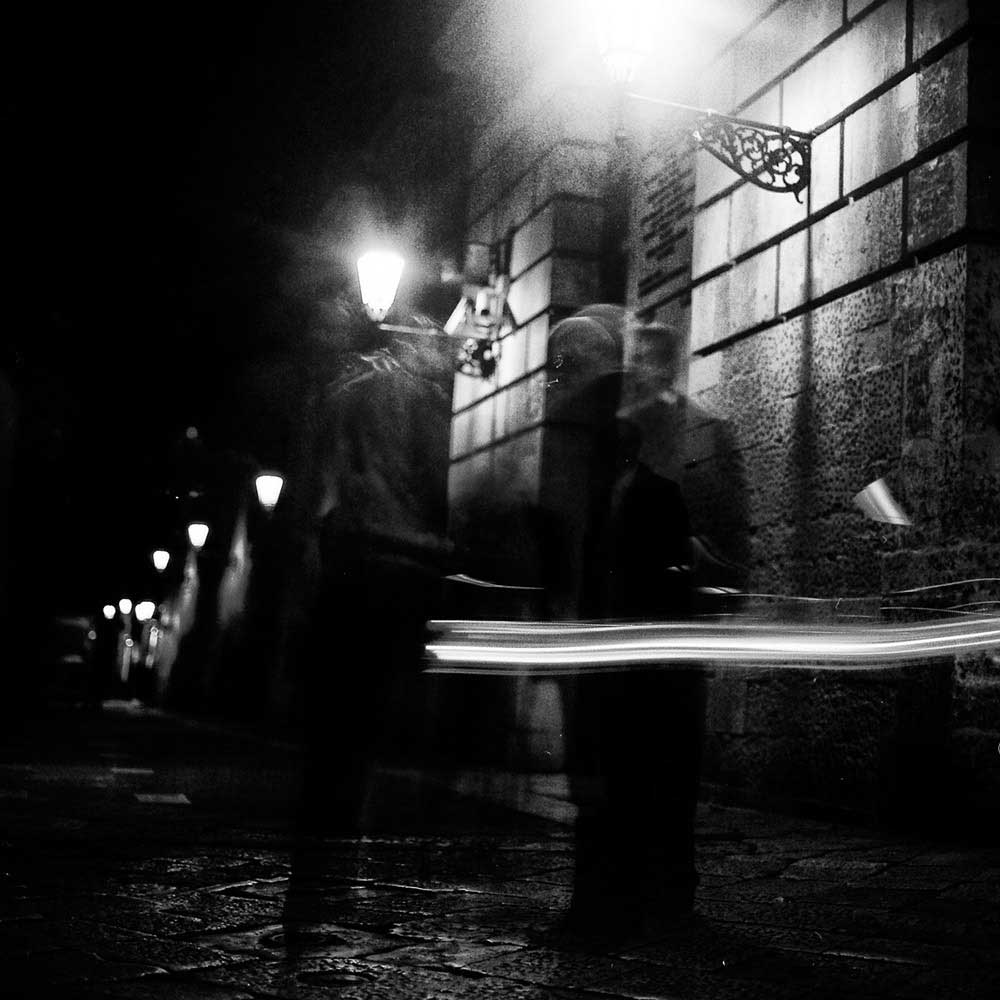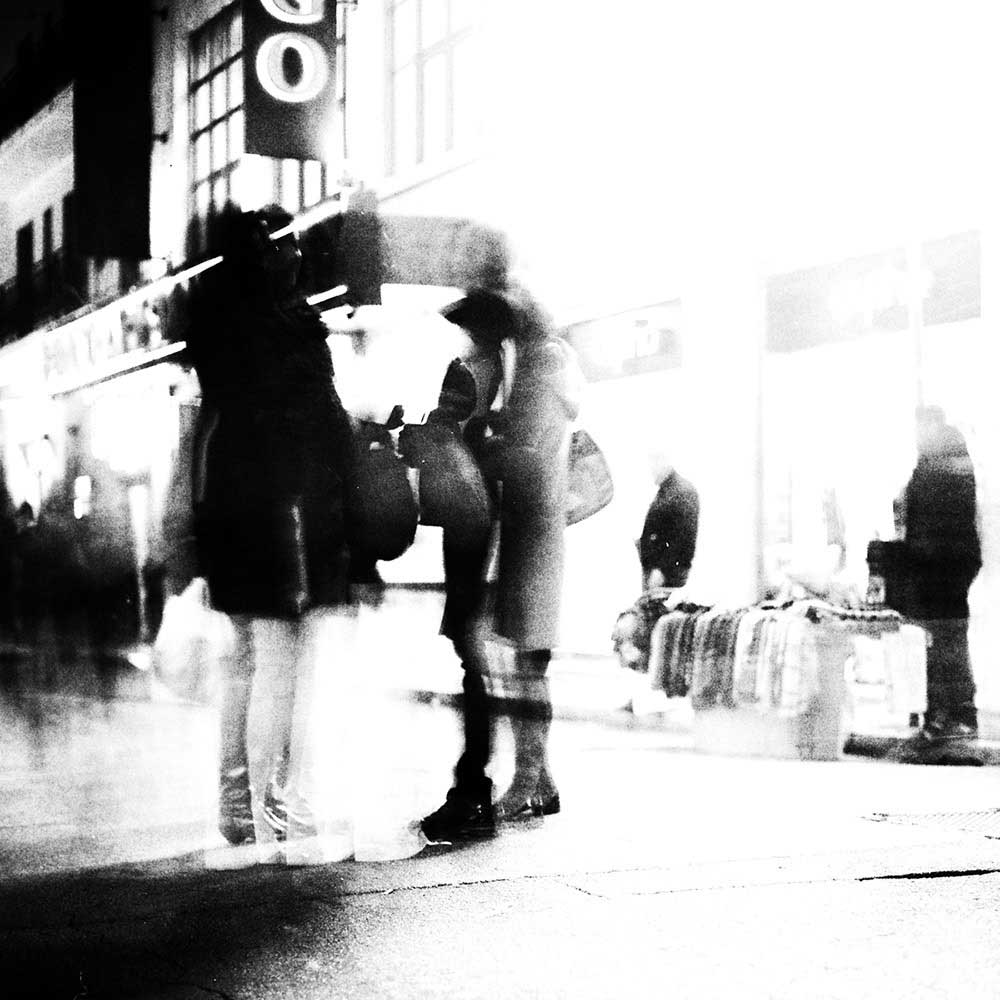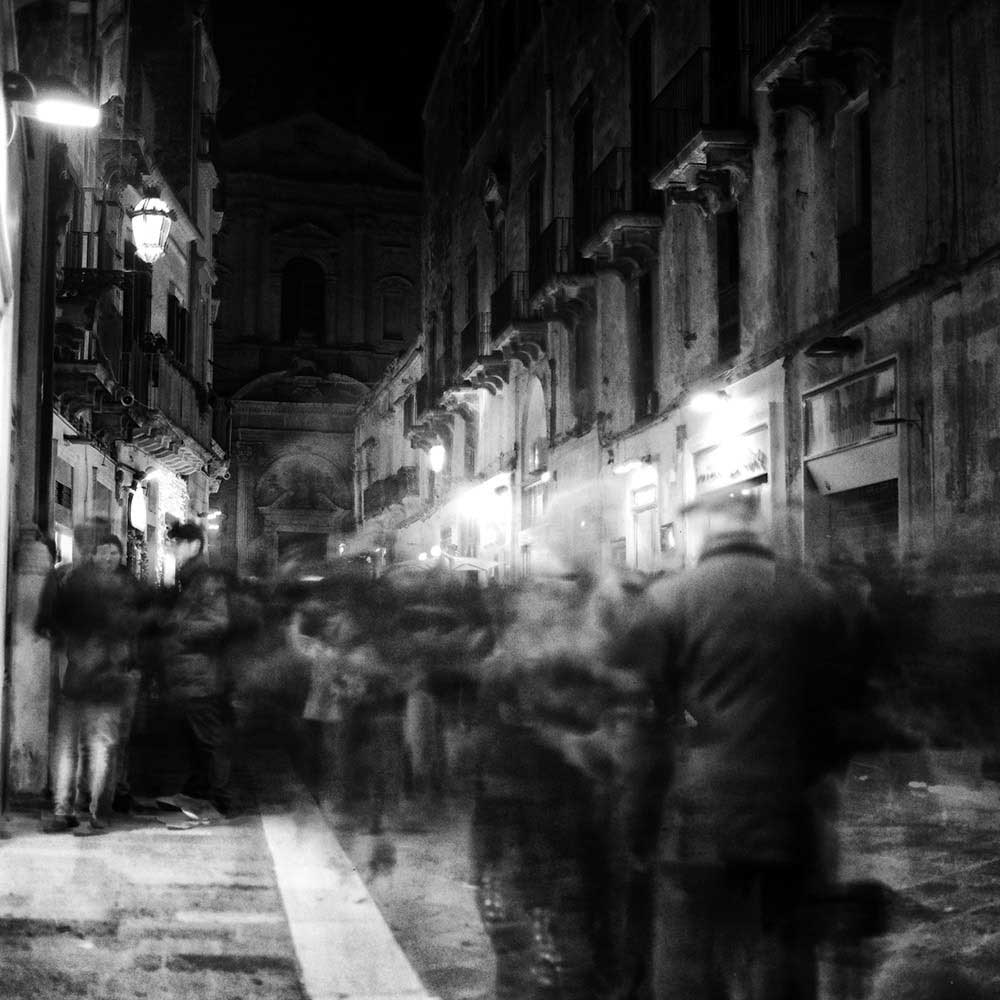Roberto De Mitri, an Italian fine-art photographer, is also a businessman based in Lecce. He took the pseudonym Tunguska.RdM, with which started and continues to take pictures.
For predisposition and predilection, Roberto De Mitri makes his photos exclusively in analog and develops the films by himself. 35mm and medium format.
Innate in him is the love for photography in black and white. The most elegant, the most profound, the most expressive and emotional. Enchanted by the aesthetics and the elegance of soft shades or the depth and fullness of the shadows. Captivated by that chemical feeling, by that atmosphere almost alchemical, never quite fully accessible and understandable, that emerged from the harmonious union of light and matter. Soul and body.
To analogue photography in black and white joined the long exposure technique. De Mitri works mostly with long exposures of landscapes and urban contexts. LE photography is important not only from the point of view of the aesthetic value, but also and especially for the emotional depth that it allows to reach. Through it is possible to explore a dimension that belongs not to the sensorial and rational experience, but to the experience of suggestion, of irrational and of the unreal.
It allows a representation of the image which is no longer merely descriptive, but becomes symbolic expression and manifestation of a feeling. Allegorical illustration of the passing of time, of the precariousness of the immanence and impermanence of life. In this way, the real physical factor and sense certainty disappear and everything becomes intimate and profound soul perception.
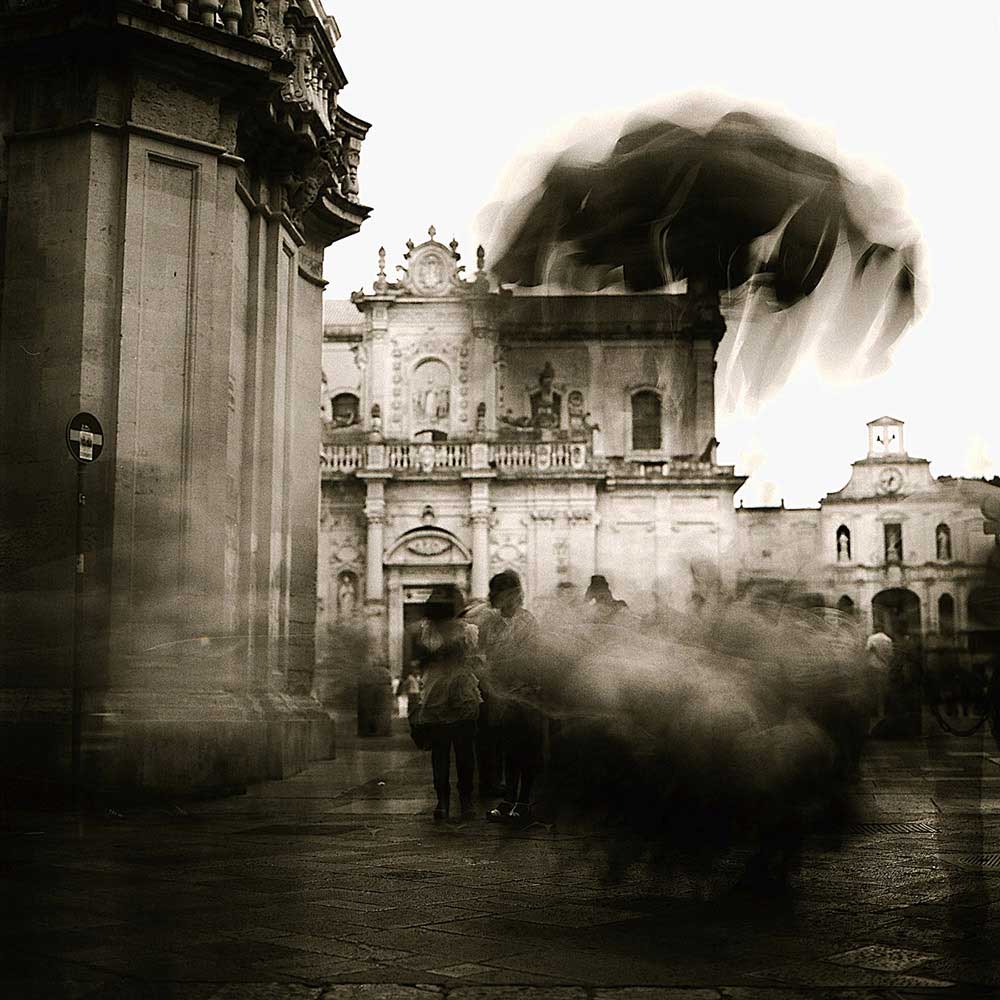
What he tries to recreate and to bring out through his photos is the feeling of void, emptiness as experience and reminiscence, alienation and detachment. The photos speak of detachments, unbridgeable distances that have no physical extent and are not measured in space and time, but they are distances which separate the desire from reality. The will by chance. This deep separation, this sharp dichotomy between desire and possibility creates a inner laceration and amputation in the soul.
Favoring this view, cities are like empty shells in which resounds the alienating echo of loneliness. Are cradles in which rise and shake the anxieties of the people. People like wandering souls. And wandering ghosts pretending to be human beings.
Individuals alone and isolated, alien to themselves and towards others. Anonymous faceless souls hostages of their own fears. These are the absolute protagonists who crowd the streets of the “City of Ghosts”.
And this is the endemic mirror of the human condition. The city is a place of concentration of solitudes. A condensed, symbolic space of ramified infrastructure, entrenched conventions, fragile and unproductive social relations. A kingdom of sensory deprivation, in which convention and routine coincide more often with something grotesquely similar to an indefinable condition of human annihilation.
As grotesque and distressing, is this the scenery which seems to us more congenial and natural. Our habitat and dress of the same our shape. An island of masks in a deep hypocrisy ocean. Masks that we learn to wear, a fiction game that we recite every day, until arrives the day in which we assimilate so well our own deceptions that we are no longer able to distinguish which character we are playing and what real part of us forever we sacrificed. We forget our true essence to find comfort in the familiarity of our own deceptions.
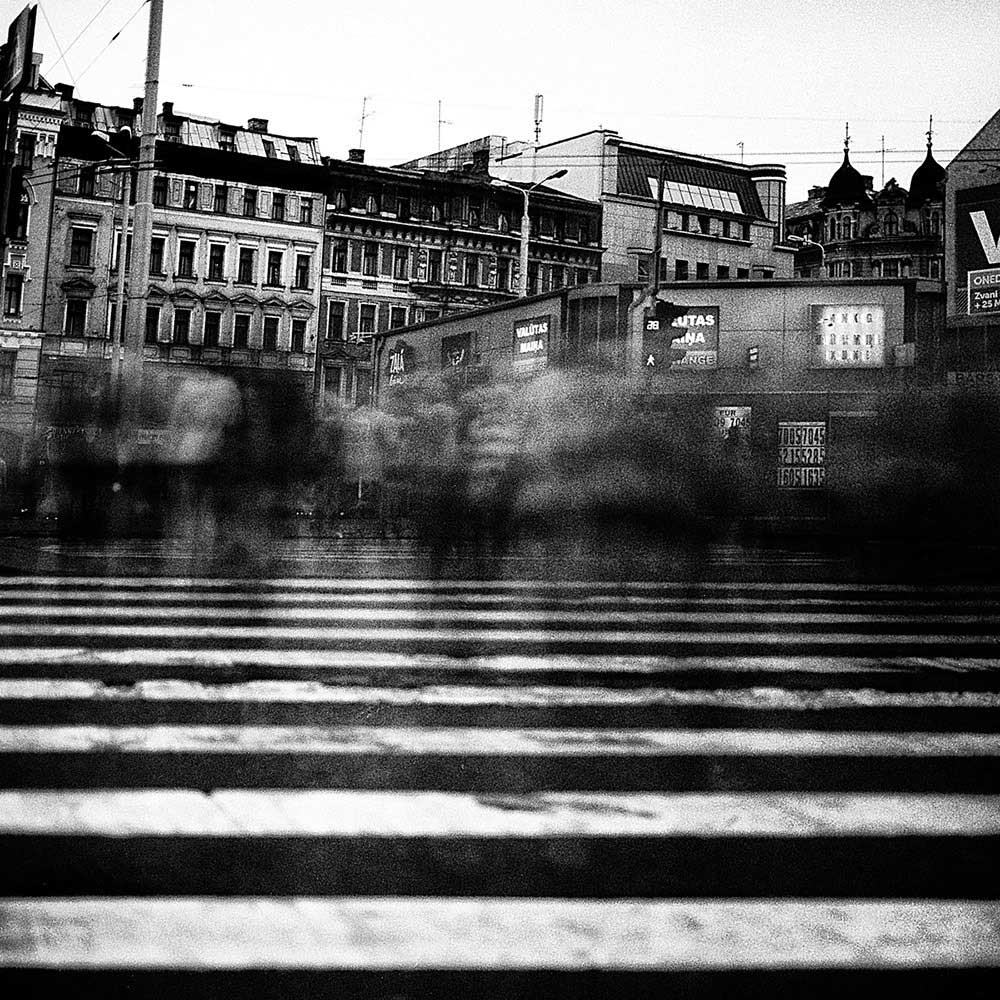
The city is the place where we manifest inability of feeling and where our fears feed on our dreams. We become more and more gray and dull, we lose detail and definition, indifferent to the feelings of others and to our own needs. No individuals with structured and complete characteristics and identities. This is not existence, but bare subsistence.
In the end, “City of Ghosts” is an abstract indefinable, densely populated by endless adrift voids. A dimension not of relationships, but of alienation. A place where the solitudes add up, but they do not understand each other. sometimes, they lightly touch, sometimes they hurt each other. And this is the only way they have to communicate. no empathy or solidarity.
Although De Mitri started doing photography, with dedication and satisfaction, just a few years ago, he got several excellent results, also in different international contests. Among the many awards, he has overcome the “Black &White Spider Awards” 2014, category “Fine art” with the photo “De silent of sand”.
He finished second at the “International Photography Awards” 2015 in Fine Art, Abstract category, for the winning entry “Nigredo”.
In 2016, he won the 11th edition of the “Black and White Spider Awards”, abstract category, with “De Fall”, winning also the title of “Honor of Distinction” in Photographer of the Year. [Official Website]
